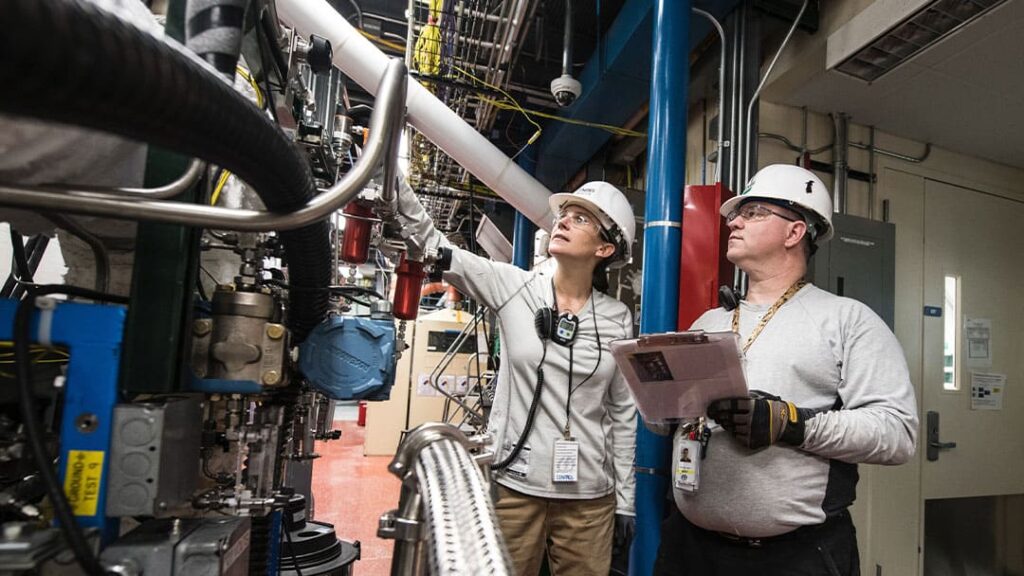The way we connect and power devices in network applications has been completely transformed by power over Ethernet (PoE) technology. By enabling network cables to carry electrical power without the need for additional outlets or adapters, PoE has simplified installations and reduced clutter. However, to harness the full potential of PoE and ensure reliable performance, choosing the correct cable is of paramount importance. In this article, we will explore the essential considerations for selecting the ideal cable solutions for Power over Ethernet applications, focusing on minimizing heat generation, the importance of cable temperature rating, conductor size, shielding, and jacketing. We will also highlight the significance of insertion loss and the advantages of using CAT6A cables for PoE.
Related Link: What is PoE Lighting? 7 Best Power over Ethernet (PoE) Lighting Options
Minimizing Heat Generation: A Key Factor in PoE Performance
Heat generation is a critical consideration when dealing with PoE applications. As power is transmitted over the network cables, it can lead to increased heat, which, if not effectively dissipated, can degrade the electrical performance of the cables. To ensure optimal performance and longevity, minimizing heat generation is essential.
Temperature Rating of the Cable
A cable’s temperature rating is the highest safe operating temperature for its jacket/insulation. For PoE applications, it is crucial to choose cables with a temperature rating higher than 60°C. Common temperature ratings for PoE cables are 60°C, 75°C, and 90°C. Opting for cables with higher temperature ratings ensures they can handle the heat generated during PoE operation without compromising performance.
Conductor Size and Resistance
Conductor resistance can also contribute to heat generation in PoE applications. To minimize this resistance, it is advisable to choose cables with larger conductor sizes. For instance, a CAT6A cable has a larger conductor size than a CAT5e cable, which results in less resistance. The greater the conductor size of the cable, the better it can reduce conductor resistance, leading to improved performance and heat dissipation.
Want to know the latest trends in the technology industry? Visit our blog.
Shielding and Jacketing
Copper cables with four separate conductors and an outer shield are known as F/UTP and are commonly used for Power over Ethernet. Unshielded twisted pair cables (UTP) are not recommended for PoE applications as they cannot effectively dissipate heat. Choosing cables with appropriate shielding and jacketing enhances heat dissipation capabilities, thus ensuring reliable performance during PoE operations.
Installation and Environmental Considerations
The installation and environmental conditions play a vital role in the performance of PoE cables. To avoid increasing cable temperature, it is essential to steer clear of circumstances that could confine heat within a cable. Avoid large cable bundles, bundling cables in close proximity, and installations that do not adhere to accepted guidelines. Proper cable management and installation techniques can help maintain a cool and stable temperature in the cables, contributing to optimal PoE performance.
Related Link: 5 Basic Tripping Settings for Circuit Breakers to Know
The Significance of Insertion Loss
Insertion loss is another critical factor to consider when selecting cables for PoE applications. It refers to the loss of signal power during transmission through the cable. In particular with rising cable temperatures, higher power levels can result in higher insertion loss levels and possibly damaged cables. By choosing cables with low insertion loss, you can ensure the safety and performance of your PoE infrastructure.
CAT6A Cables
When it comes to Power over Ethernet (PoE) applications, CAT6A cables stand out as an option that is both dependable and high-performing. CAT6A cables are capable of meeting the requirements of a wide range of industries, including the military, education, and healthcare, and are therefore regarded as a technology that is future-proof.
Advantages of CAT6A Cables for PoE:
● Superior Performance: CAT6A cables with solid copper wires deliver higher performance compared to other alternatives. The improved transmission bandwidth frequency of 500 MHz allows for faster and more efficient data transfer.
● 10-Gigabit Ethernet Capability: CAT6A cables can transmit 10-Gigabit Ethernet over a distance of 100 meters, making them suitable for high-bandwidth applications.
● Reduced Resistance and Heat: The larger diameter (23AWG) of CAT6A cables contributes to reduced resistance, lower temperature, and minimal power waste during PoE operations.
● Enhanced Alien Crosstalk Characteristics: CAT6A cables feature insulation and additional, tighter twisting, which improves alien crosstalk performance, reducing interference from neighboring cables.
● Reliability and Future-Proofing: Investing in CAT6A cables ensure a reliable infrastructure that can support current and future PoE applications, making it a cost-effective and long-lasting solution.
Not All CAT6A Cables Are Created Equal
While CAT6A cables offer numerous advantages for PoE applications, it is crucial to recognize that not all cables are of equal quality. To ensure the safety and performance of your PoE infrastructure, demand quality cables from reputable manufacturers. Beware of inferior, counterfeit, or mislabeled cables, as they can severely impact PoE performance and compromise the reliability of your network.
Looking to implement workplace technology for your business? Contact us today.
Making the Right Choice for PoE
Selecting the correct cable for PoE applications is critical to achieving optimal performance and reliability. By considering factors such as cable temperature rating, conductor size, shielding, jacketing, and insertion loss, you can ensure that your PoE infrastructure operates efficiently and safely. CAT6A cables stand out as a solid choice for PoE due to their superior performance, future-proof capabilities, and reduced resistance and heat generation. To safeguard your investment and network integrity, only choose high-quality cables from reputable manufacturers, avoiding substandard or mislabeled options. By making informed decisions and prioritizing the quality of your cables, you can unlock the full potential of Power over Ethernet and power your network with confidence.
Related Link: Cable Jacket Ratings: What Does Your Cable Need?
Last Updated on August 21, 2023 by Josh Mahan




